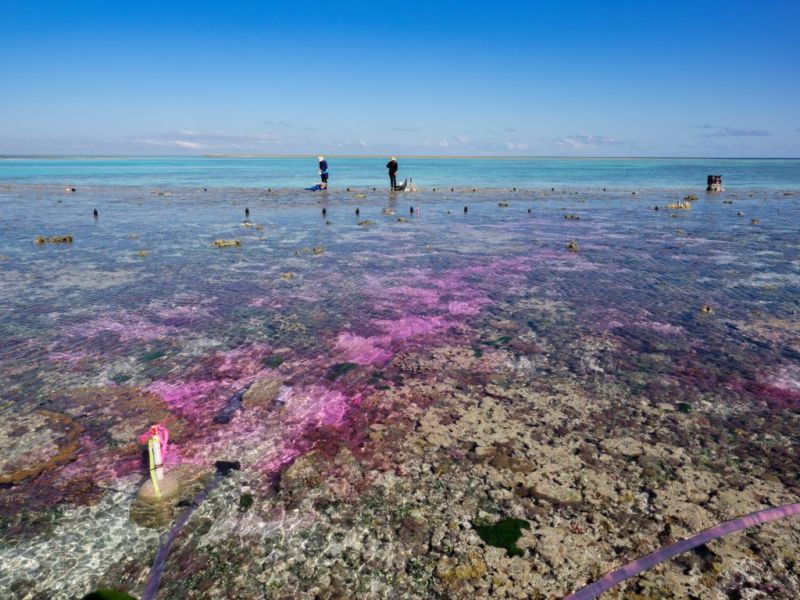
Enlarge / Water carrying a dye and added CO₂ is bubbled over the Great Barrier Reef. (credit: Aaron Takeo Ninokawa )
Coral reefs are not just pretty and cool—beyond tourism dollars and once-in-a-lifetime diving experiences, they provide real utility to human society. They provide homes to about a quarter of the world’s fish, which many people rely on as a food source. They can act as a barrier to rising sea levels, and they can protect coastlines from eroding.
But thanks to all the carbon we’ve pumped into the air, coral reefs are disappearing. Fast. Part of that is heat stress, but CO2 can also influence coral’s ability to form reefs in the first place. A new experiment gives us our first look at how much this affects a complete reef ecosystem.
When oceans take up atmospheric carbon dioxide, they acidify. This in turn depresses the concentration of carbonate ions in the water. When there is a dearth of carbonate ions in seawater, coral reefs, made of carbonates, dissolve to restore the balance. So it stands to reason that increasing carbon dioxide in the water would spell trouble for the corals.
Read 7 remaining paragraphs | Comments
Part of the Great Barrier Reef exposed to more CO₂; results are grim published first on https://medium.com/@CPUCHamp